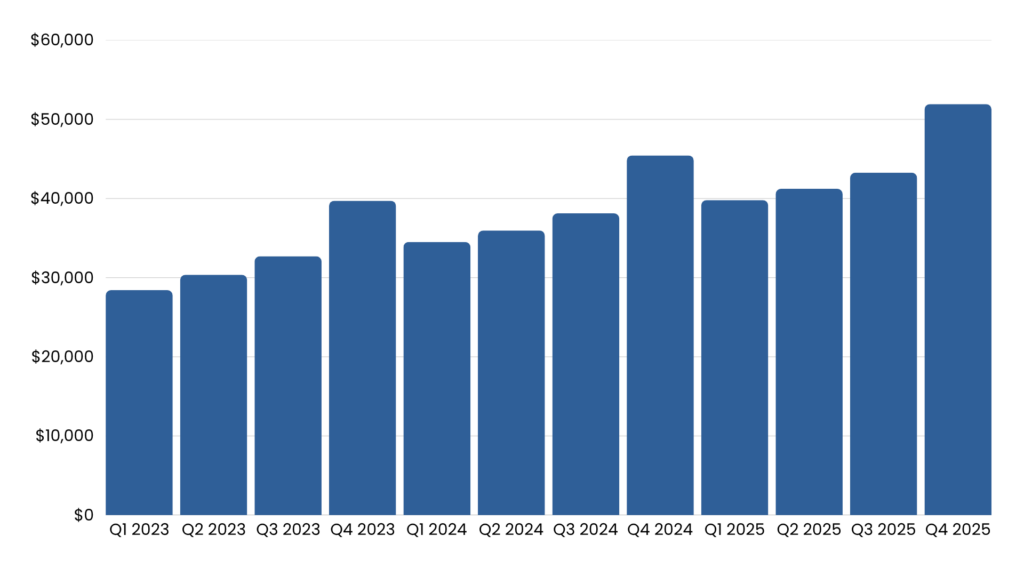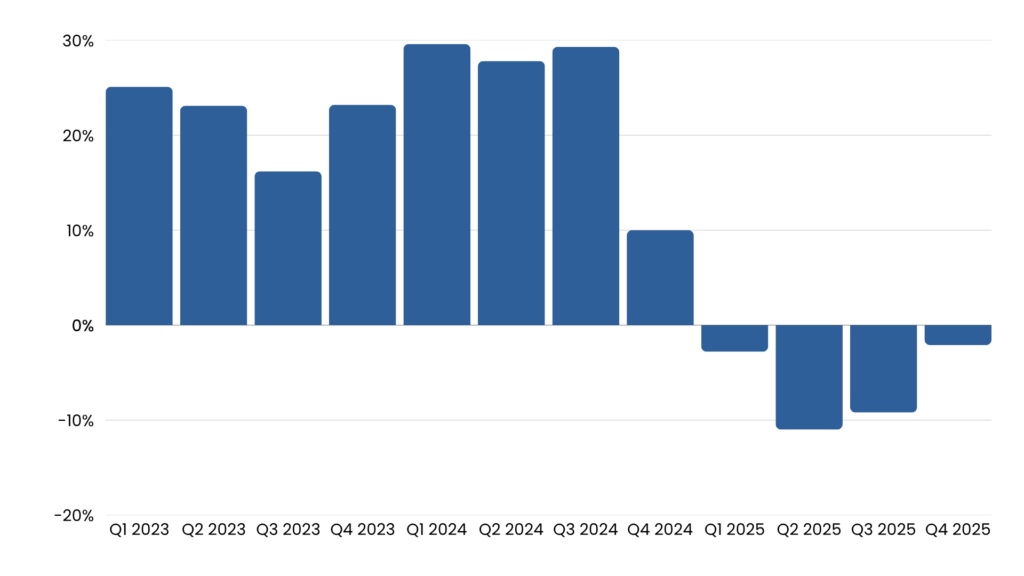

This year, global ad spending is expected to reach $1.16 trillion, with growth projected to accelerate to 6% in 2026. While these figures seem promising, the underlying narrative is more complicated, raising important questions for marketing leaders to consider.
The most significant takeaway is that just three companies, Alphabet, Meta, and Amazon, are projected to account for 54% of all global advertising spend outside of China by 2025. This figure is expected to increase further next year. While we have discussed the dominance of Meta and Google for years, Amazon’s swift entry into the advertising landscape, mainly through retail media, indicates a new era of overconcentration in the market.
That’s not just dominance. It’s dependency.
It is becoming increasingly evident that a dangerous imbalance is developing in the advertising ecosystem. For every new dollar spent on ads, more than $0.90 cents go to just two companies. This situation is particularly concerning in markets like Canada, where domestic publishers, already facing challenges, are receiving a smaller share of an expanding overall market. If this trend continues unchecked, it could have serious negative implications for our national media landscape.
The rise of Retail Media Networks (RMNs) adds to the complexity of advertising strategies. RMNs are currently the fastest-growing advertising channel worldwide, with an expected growth rate of 14% this year. Just a few years ago, they were considered a minor aspect of the advertising landscape. Today, they are capturing budgets that were previously allocated to broadcast, digital display, or long-term brand campaigns.

While RMNs provide precise attribution and access to high-intent audiences, they primarily focus on bottom-of-funnel conversions. This raises an important question that we need to consider more: What is being overlooked in the rush to convert?
As economic pressures increase due to rising tariffs and supply chain disruptions, we are observing a familiar trend. Retail advertising spending is projected to decline by more than 6%, while the automotive sector is anticipated to reduce its spending by 4%. In response to uncertainty in the short term, brands are pausing, delaying, or significantly cutting back on their advertising campaigns.

This shift is understandable. But it’s also dangerous.
The current economic climate is leading to an increase in short-term thinking. Promotional activities are overshadowing investments in brand development. Chief Marketing Officers (CMOs) are facing tough decisions. In many boardrooms, marketing is viewed as an expense rather than an asset. While cutting brand budgets may protect profit margins in the short term, it can jeopardize brand equity in the long run.
Brand equity is more important now than ever. Trust in brands is low, and customer loyalty is fragile. Consumers are ignoring generic messages and are instead responding to brands that appear consistent, human, and intentional. This kind of connection isn’t achieved through flash sales or price-matching advertisements. It requires meaningful and sustained investment in brand identity over time.
If that sounds idealistic, here’s the pragmatic side: this moment will pass. And when it does, the brands that continued to invest, when others went dark, will be the ones consumers remember. That’s not just theory; it’s how market share shifts in a recovery.
There’s a valuable analogy in investing. When the market becomes uncertain, many people choose to withdraw and wait. However, the boldest, and often the wisest investors act when others hesitate. The same principle applies to marketing. Although maintaining brand investment during uncertain times may feel uncomfortable or even counterintuitive, it’s one of the best strategies for positioning ourselves for the mid-term.
What we need now is not a complete reinvention but strategic rebalancing. This involves resisting the temptation to focus solely on performance metrics. We must ask ourselves tougher questions about where our media spending is directed and what kind of ecosystem we are supporting as a result. It means choosing back publishers, platforms, and partners who share our values, rather than just our short-term objectives.
This is not an argument against performance; rather, it is a call to defend the entire marketing funnel. We must ensure that we are not sacrificing our future for short-term efficiency. Our responsibility is not just to chase ROI; it is also to build relevance, trust, and long-term brand value.
Leadership in this moment requires courage, the courage to remain visible, the courage to continue building even when it seems easier to retreat, and the courage to invest in your brand rather than just focusing on your balance sheet.
As the advertising economy shifts, platforms consolidate, and every signal encourages us to “play it safe,” consider the more challenging question: What will your brand look like in a year? In two years? In five years?
The boldest, and smartest move in this moment is to keep building.